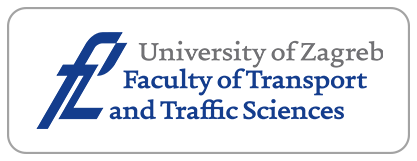Collaborative 4-Dimentional Trajectory Optimisation for High-Density Flow Corridors

Downloads
Flow corridors are novel types of flexible tube-shaped airspace developed to accommodate the rapid growth in air traffic. In the context of 4D-trajectory-based operation (4D-TBO), given the temporal-spatial characteristics of the airspace, it is crucial to ensure that the workload in high-density corridors does not significantly increase due to additional time constraints. Therefore, it becomes imperative to explore more efficient and reliable methods for generating 4D trajectories in these new airspace prototypes. This paper proposes a multi-aircraft optimisation method aimed at maximising system-wide benefits within flow corridors. Specifically, based on a collaborative decision-making (CDM) mechanism with an emphasis on negotiation capabilities required by the new air traffic management system, we focus on developing a collaborative optimisation process treated as a pure-strategy game and establishing a collaborative flight mechanism as a decision criterion. We employ a distributed auction algorithm with a distributed computing structure to find a weak Pareto-Nash equilibrium that guarantees individual preferences while improving throughput and fuel economy. We demonstrate our approach through numerical experiments conducted in one of China’s busiest en-route areas. The results show significant improvements in throughput and fuel economy without compromising safety while maintaining computational performance even with increasing fleet size.
Downloads
Office D. Joint planning and development office: Concept of operation for the next generation air transportation system Ver. 3.2. 2010.
Verma S, et al. Design and analysis of corridors for UAM operation. IEEE/AIAA 41st Digital Avionics Systems Conference (DASC). 2022:1-10. DOI: 10.1109/DASC55683.2022.9925820.
Prabhath K, et al. Invited paper: Ground-based communication support for air corridors. 2023 IEEE 34th Annual International Symposium on Personal, Indoor and Mobile Radio Communications (PIMRC), Toronto, ON, Canada, 2023. p. 1-6, DOI: 10.1109/PIMRC56721.2023.10294054.
Xue M, Zelinski S. Complexity analysis of traffic in corridors-in-the-sky. 10th AIAA Aviation Technology, Integration, and Operations Conference, Spt. 2010. DOI: 10.2514/6.2010-9112.
Dong Y, et al. China’s corridors-in-the-sky design and space-time congestion identification and the influence of air routes’ traffic flow. Journal of Geographical Sciences. 2019;29(12):1999-2014. DOI: 10.1007/s11442-019-1701-3.
Ye B, Liu B, Xue A, Tian, Y. Optimal design of flow corridors to minimize environmental impact with consideration of en-route weather conditions. Discrete Dynamics in Nature and Society. 2020. DOI: 10.1155/2020/2973539.
Campos LMBC, Marques JMG. On probabilistic risk of aircraft collision along air corridors. Aerospace. 2021;8(2). DOI: 10.3390/aerospace8020031.
Zhang Y, Shortle J, Sherry L. Methodology for collision risk assessment of an airspace flow corridor concept. Reliability Engineering & System Safety. 2015;142(5):444-455. DOI: 10.1016/j.ress.2015.05.015.
Muna SI, et al. Air corridors: Concept, design, simulation, and rules of engagement. Sensors. 2021;21(22). DOI: 10.20944/PREPRINTS202109.0232.V1.
Ye B, Ni C, Tian Y, Ochieng WY. Data-driven distributionally robust generation of time-varying flow corridor networks under demand uncertainty. Transportation Research Part C. 2022;136. DOI: 10.1016/j.trc.2021.103546.
Wang ZY, Delahaye D, Farges JL, Alam S. Air traffic assignment for intensive urban air mobility operations. Journal of aerospace information systems. 2021;18(11):860-875. DOI: 10.2514/1.I010954.
Mundra AD, Simons EM. Self-separation corridor. 26th Digital Avionics Systems Conference; 2007. DOI: 10.1109/DASC.2007.4391883.
Nakamura Y, Takeichi N, Kageyama K. A self-separation algorithm using relative speed for high density air corridor. Guidance, Navigation, and Control and Co-located Conferences; 2013. DOI:10.2514/6.2013-5069.
Nakamura Y, Takeichi N. A self-separation algorithm for high-density air corridor allocated to optimal flight trajectories. AIAA Modeling and Simulation Technologies Conference; 2016. DOI: 10.2514/6.2016-0426.
Nakamura Y, Takeichi N. A self-separation algorithm for width-limited high density air corridor. Journal of Aerospace Engineering. 2016;230(9):1632–1640. DOI:10.1177/0954410015620446.
Tian Y, Dong Y, Ye B, Wan L. A framework for the assessment of distributed self-separation procedures for air traffic in flow corridors. IEEE Access. 2019;7:123544-123557. DOI: 10.1109/ACCESS.2019.2937655.
Ye B, Hu M, Shortle JF. Collision risk-capacity tradeoff analysis of an en-route corridor model. Chinese Journal of Aeronautics. 2014;27(1):124-135. DOI: 10.1016/j.cja.2013.12.007.
Ye B, Yang Z, Wan L, Dong Y. Multi-objective evaluation of airborne self-separation procedure in flow corridors based on TOPSIS and entropy. Sustainability. 2019;12(1). DOI: 10.3390/su12010322.
Morooka Y, Takeichi N, Yamamoto S. Feasibility study of a layered air corridor through direct operational cost evaluation. in AIAA Scitech, 2019 Forum, San Diego, California, USA; 2019. DOI: 10.2514/6.2019-1362.
Yang S, Zhang J, Chen P, Yan Y. Multiobjective optimization model for collaborative en-route and slot allocation. Mathematical Problems in Engineering. 2018. p. 1-7. DOI: 10.1155/2018/5686281.
Erkan H, Erkip NK, Safak O. Collaborative decision making for air traffic management: A generic mathematical program for the rescheduling problem. Computers and Industrial Engineering. 2019;137. DOI:10.1016/j.cie.2019.106016.
Xu Y, et al. A framework for collaborative air traffic flow management minimizing costs for airspace users: enabling trajectory options and flexible pre-tactical delay management. Transportation Research Part B: Methodological. 2020;134:229-255. DOI:10.1016/j.trb.2020.02.012.
Chen K, Chen J, Yang L, Yang X. Collaborative slot secondary allocation based on flight wave operation. International Journal of Intelligent Computing and Cybernetics. 2023;16(2): 364-395. DOI: 10.1108/IJICC-06-2022-0172.
Murça MCR. Collaborative air traffic flow management: Incorporating airline preferences in rerouting decisions. Journal of Air Transport Management. 2018;71:97-107. DOI:10.1016/J.JAIRTRAMAN.2018.06.009.
Ramasamy S, Sabatini R, Gardi A. Liu Y. Novel flight management system for real-time 4-dimensional trajectory based operations. Proceedings of AIAA Guidance, Navigation, and Control conference, 2013, Boston, MA, USA, 2013. DOI: 10.2514/6.2013-4763.
Lu X, Morioka K, Kanada N, Koga T. 4D trajectory negotiation to achieve situational and operational awareness for air traffic management. 2023 IEEE 15th International Symposium On Autonomous Decentralized System; 2023. p. 171-176. DOI: 10.1109/ISADS56919.2023.10091979.
SESAR. European ATM Master Plan - Edition 2015. The roadmap for sustainable air traffic management, publications office of the European Union, Luxembourg; 2015.
Rodríguez-Sanz Á. et al. Practical implementation of 4D-trajectories in air traffic management: System requirements and time windows monitoring. Aircraft Engineering and Aerospace Technology. 2020;92(9):1357–1375. DOI: 10.1108/AEAT-12-2019-0236.
Wang S, et al. Multi-flight rerouting optimisation based on typical flight paths under convective weather in the terminal area. Promet - Traffic&Transportation. 2022;34(6):907–926. DOI: 10.7307/ptt.v34i6.4195.
Takeichi N, Yamada T. Development of a flight time uncertainty model for four-dimensional trajectory management. Journal of air transportation. 2020;28(3):134-143. DOI: 10.2514/1.D0185.
Zhang HY, Liu ZZ. Four-dimensional aircraft trajectory prediction based on generative deep learning. Journal of aerospace information systems. 2024;24(7):554-567. DOI: 10.2514/1.I011333.
Federal Aviation Administration. NextGen Implementation Plan. FAA: Washington, DC, USA; 2017.
Yousefi A, Zadeh AN. Dynamic allocation and benefit assessment of NextGen flow corridors. Transportation Research Part C Emerging Technologies. 2013;33:297-310. DOI: 10.1016/j.trc.2012.04.016.
Ye LS, Cao L, Wang XH. Evaluating fuel consumption for continuous descent approach based on QAR data. Promet - Traffic&Transportation. 2019;31(4):407-421. DOI: 10.7307/ptt.v31i4.2933.
Yang L. An intelligent method to select emergency allocation path of groundwater resource based on game theory. Arabian Journal of Geosciences. 2021;14(12):1-8. DOI: 10.1007/s12517-021-07464-x.
Chang SL, Lee KC, Huang RR, Liao YH. Resource-allocation mechanism: Game-theory analysis. Symmetry. 2021;13(799). DOI: 10.3390/SYM13050799.
Singh MK, Choudhary A, Gulia S, Verma A. Multi-objective NSGA-II optimization framework for UAV path planning in an UAV-assisted WSN. The Journal of Supercomputing. 2023; 1-35. DOI: 10.1007/s11227-022-04701-2.
SESAR. 4D Trajectory management pilot simulation. EEC Report; 2008.
Yan S, Cai K. A multi-objective multi-memetic algorithm for network-wide conflict-free 4D flight trajectories planning. Chinese Journal of Aeronautics. 2017;91(5):761-782. DOI: 10.1016/j.cja.2017.03.008.
Copyright (c) 2025 Lisha YE, Li CAO, Zhida ZHAO

This work is licensed under a Creative Commons Attribution-NonCommercial 4.0 International License.




















